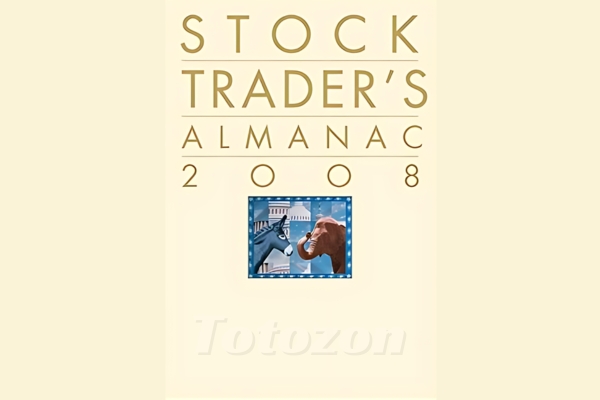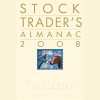Stock Traders Almanac 2008 with Jeffrey Hirsch & Yale Hirsch
$6.00
File Size: Coming soon!
Delivery Time: 1–12 hours
Media Type: Online Course
Stock Traders Almanac 2008 with Jeffrey Hirsch & Yale Hirsch
Introduction
Navigating the complexities of the stock market requires reliable resources and insightful analysis. The “Stock Traders Almanac 2008” by Jeffrey Hirsch and Yale Hirsch offers precisely that, providing traders with a wealth of historical data, market strategies, and valuable insights. This article explores the key features of the 2008 edition and how it can enhance your trading strategy.
The Legacy of the Stock Traders Almanac
The Origins of the Almanac
The Stock Traders Almanac was first published by Yale Hirsch in 1967, quickly becoming a go-to resource for market analysis and historical trends.
Evolution Over Time
Jeffrey Hirsch, continuing his father’s legacy, has ensured that each edition remains relevant by incorporating contemporary market strategies and data.
The Significance of the 2008 Edition
The 2008 edition is particularly noteworthy for its insights into the pre-financial crisis market, offering lessons that remain valuable today.
Key Features of the 2008 Almanac
Historical Market Data
- Monthly and Daily Data: Comprehensive historical data for each month and day, helping traders identify recurring patterns.
- Seasonal Trends: Analysis of seasonal patterns and their impact on market performance.
Market Analysis
- Technical Indicators: Essential tools for technical analysis, including moving averages and the Relative Strength Index (RSI).
- Fundamental Analysis: Insights into economic indicators and their influence on market trends.
Trading Strategies
- Best Six Months Strategy: Focuses on the most profitable months of the year for stock trading.
- Santa Claus Rally: Examination of the year-end rally phenomenon.
The Best Six Months Strategy
Understanding the Strategy
The Best Six Months Strategy suggests that the stock market performs best from November to April, based on historical performance data.
Historical Performance
Historical data shows that these six months generally yield higher returns compared to the rest of the year.
Implementing the Strategy
- Buy in November: Enter the market in November.
- Sell in April: Exit positions in April to avoid the traditionally weaker months.
The Santa Claus Rally
What is the Santa Claus Rally?
The Santa Claus Rally refers to the tendency for the stock market to rise in the last week of December and the first two trading days of January.
Historical Analysis
Historical data supports the existence of this rally, with positive returns in most years.
How to Capitalize on the Rally
- Timing: Enter the market in late December.
- Exit: Consider exiting positions after the first two trading days of January.
Utilizing Technical Indicators
Moving Averages
- Simple Moving Average (SMA): Averages the closing prices over a specified period.
- Exponential Moving Average (EMA): Gives more weight to recent prices for a more responsive indicator.
Relative Strength Index (RSI)
- Overbought/Oversold Conditions: Identifies potential reversal points by measuring the speed and change of price movements.
MACD (Moving Average Convergence Divergence)
- Trend Following: Indicates bullish or bearish trends by comparing short-term and long-term moving averages.
Fundamental Analysis Insights
Economic Indicators
- GDP Growth: A key indicator of economic health.
- Unemployment Rate: Impacts consumer spending and economic stability.
Corporate Earnings
- Earnings Reports: Quarterly earnings reports provide insights into a company’s financial health.
- Earnings Per Share (EPS): Measures a company’s profitability on a per-share basis.
Seasonal Patterns and Trends
January Effect
The January Effect refers to the tendency for small-cap stocks to outperform in January.
Sell in May and Go Away
This adage suggests that the market tends to underperform from May to October.
Holiday Effect
The market often experiences positive returns on trading days preceding a holiday.
Risk Management Strategies
Stop-Loss Orders
Implementing stop-loss orders can help limit potential losses by automatically selling a security when it reaches a predetermined price.
Diversification
Diversify your portfolio to spread risk across various asset classes and sectors.
Hedging
Use options and other derivative instruments to hedge against potential market downturns.
Behavioral Finance
What is Behavioral Finance?
Behavioral finance examines how psychological factors affect market outcomes and investment decisions.
Common Behavioral Biases
- Overconfidence
- Herding
- Loss Aversion
Understanding Financial News
Importance of Financial News
Staying informed about financial news helps you make timely and informed investment decisions.
Reliable Sources of Financial News
- Financial Times
- Wall Street Journal
- Bloomberg
Building a Strong Portfolio
Components of a Strong Portfolio
A well-balanced portfolio includes a mix of stocks, bonds, and other asset classes.
Portfolio Rebalancing
Regularly review and adjust your portfolio to maintain your desired asset allocation.
Evaluating Portfolio Performance
Measure your portfolio’s performance against relevant benchmarks to ensure it meets your financial goals.
Conclusion
The “Stock Traders Almanac 2008” by Jeffrey Hirsch and Yale Hirsch remains an essential tool for traders and investors looking to make informed decisions. By leveraging historical data, market analysis, and strategic insights, you can enhance your trading performance and achieve your financial goals. Stay ahead of the market trends, and let the Almanac guide you through the complexities of stock trading.

FAQs
What is the main focus of the “Stock Traders Almanac 2008”?
The main focus is on providing historical market data, seasonal trends, and strategic insights to aid traders and investors in making informed decisions.
How can the Best Six Months Strategy benefit traders?
The Best Six Months Strategy can help traders capitalize on the historically strong performance of the market from November to April.
What is the Santa Claus Rally?
The Santa Claus Rally refers to the tendency for the stock market to rise during the last week of December and the first two trading days of January.
How important are technical indicators in trading?
Technical indicators are crucial for analyzing market trends, identifying potential entry and exit points, and making informed trading decisions.
Why is risk management important in trading?
Risk management is essential to protect your investment capital and minimize potential losses in the volatile stock market.
Be the first to review “Stock Traders Almanac 2008 with Jeffrey Hirsch & Yale Hirsch” Cancel reply
You must be logged in to post a review.
Related products
Forex Trading
Forex Trading
Forex Trading
Forex Trading
Forex Trading
Forex Trading
Forex Trading
Forex Trading
Forex Trading
Forex Trading
Forex Trading
Forex Trading
Forex Trading






















Reviews
There are no reviews yet.